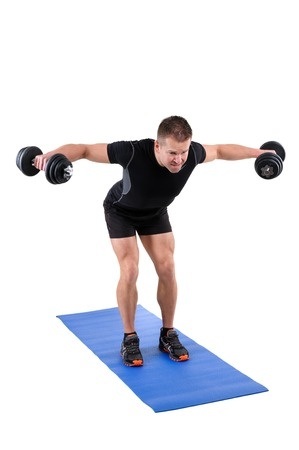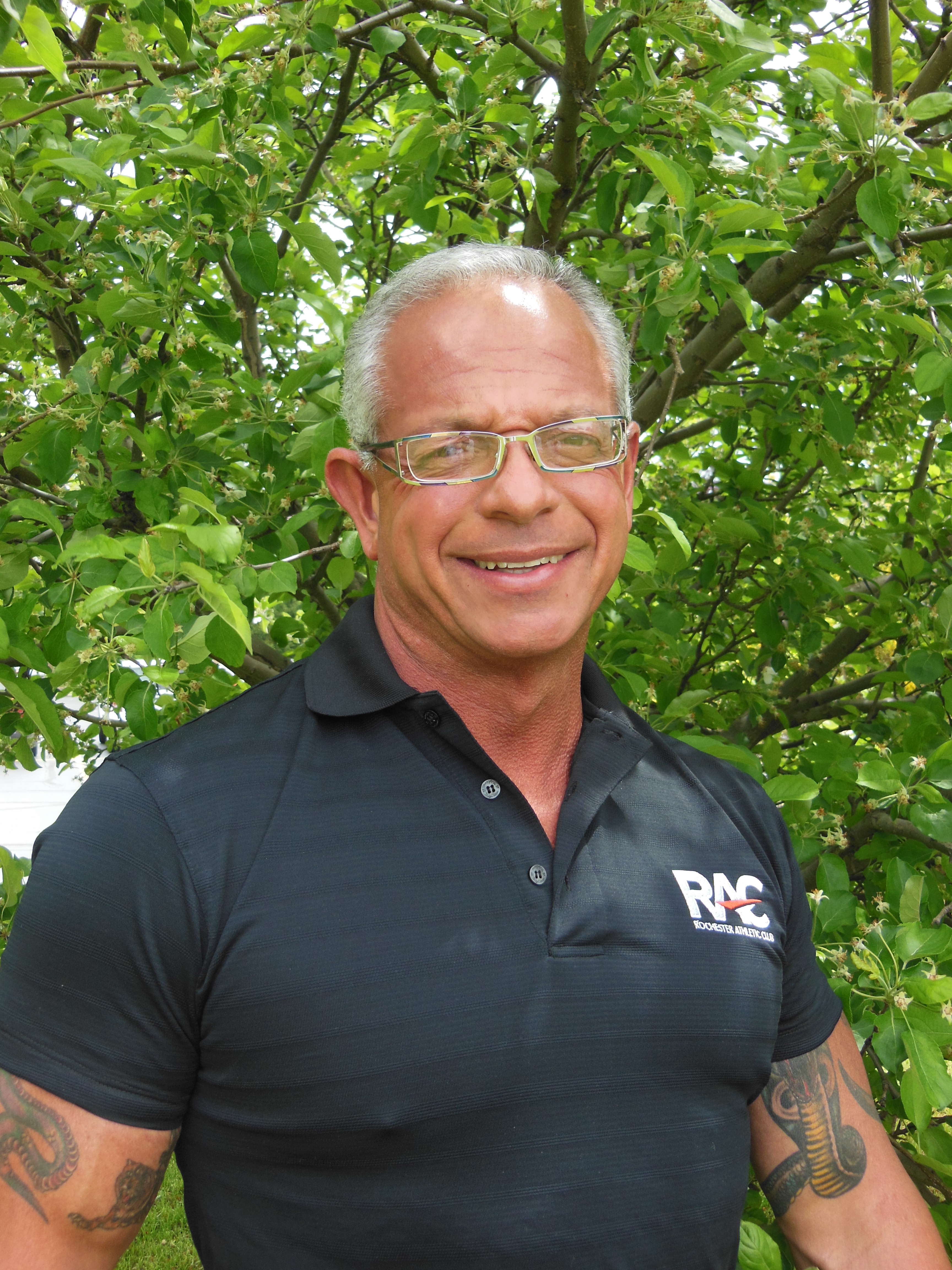Emphasis
The primary muscles stressed in the movement are the shoulder muscles (posterior deltoid). The secondary musclews stressed are the trapezius and lower back.
Starting Position
Grab a dumbbell in each hand. Stand with your feet shoulder width apart and knees slightly bent. Bend forward at the hips until your back is parallel to the floor. Extend your arms down toward the floor with your elbows slightly bent, palms facing each other. Push your chest down toward the floor and pull your shoulders back.
Movement
Keeping your elbows slightly bent, raise the dumbbells out to the sides until your elbows are level with your shoulders. Keep your hands in line with your shoulders or slightly wider. Take two to three seconds to lower the dumbbells down to the extended position.
Training Tips
- Focus on keeping your elbows forward so they are aligned with your shoulders. This will help to isolate the posterior deltoid.
- Keep your chest pushed out and your shoulders back to help isolate the posterior deltoid.
Options
- You can place your hands so your palms are facing to help keep your shoulders aligned with your shoulders.
- You can lay (prone) on an incline sit-up bench with your feet below your head at a small angle. This position will relieve the stress placed on your lower back.
- You can also perform this movement with cables.
Warning Tips
- Do not shrug your shoulders as you bring the dumbbells up to parallel. Failure to do so can result in injury to your shoulers, trapezius and neck.
- Do not let your body move up and down as you raise the dumbbells up and down. Failure to do so can result in serious injurty to your lower back.
- Do not lower the dumbbells any faster than two to three seconds. You must be in control at all times during this movement. The faster you perform this movement, the less control you will have which in turn will increase your risk of injury.
 Robert Bovee Certified Master PPT, RTS, ETS, FTS
Robert Bovee Certified Master PPT, RTS, ETS, FTS
As one of the most successful Professional Personal Trainers and Exercise/Fitness Therapists in the United States, Robert continues to remain at the forefront of the industry by providing his clients with a thorough education and the tools to implement that education. By improving his client’s physical health, strength, endurance, cardiovascular fitness and nutritional habits, he is able to motivate them to lead longer, happier and more productive lives. Find out more about Robert and his personal training career and services, here.






